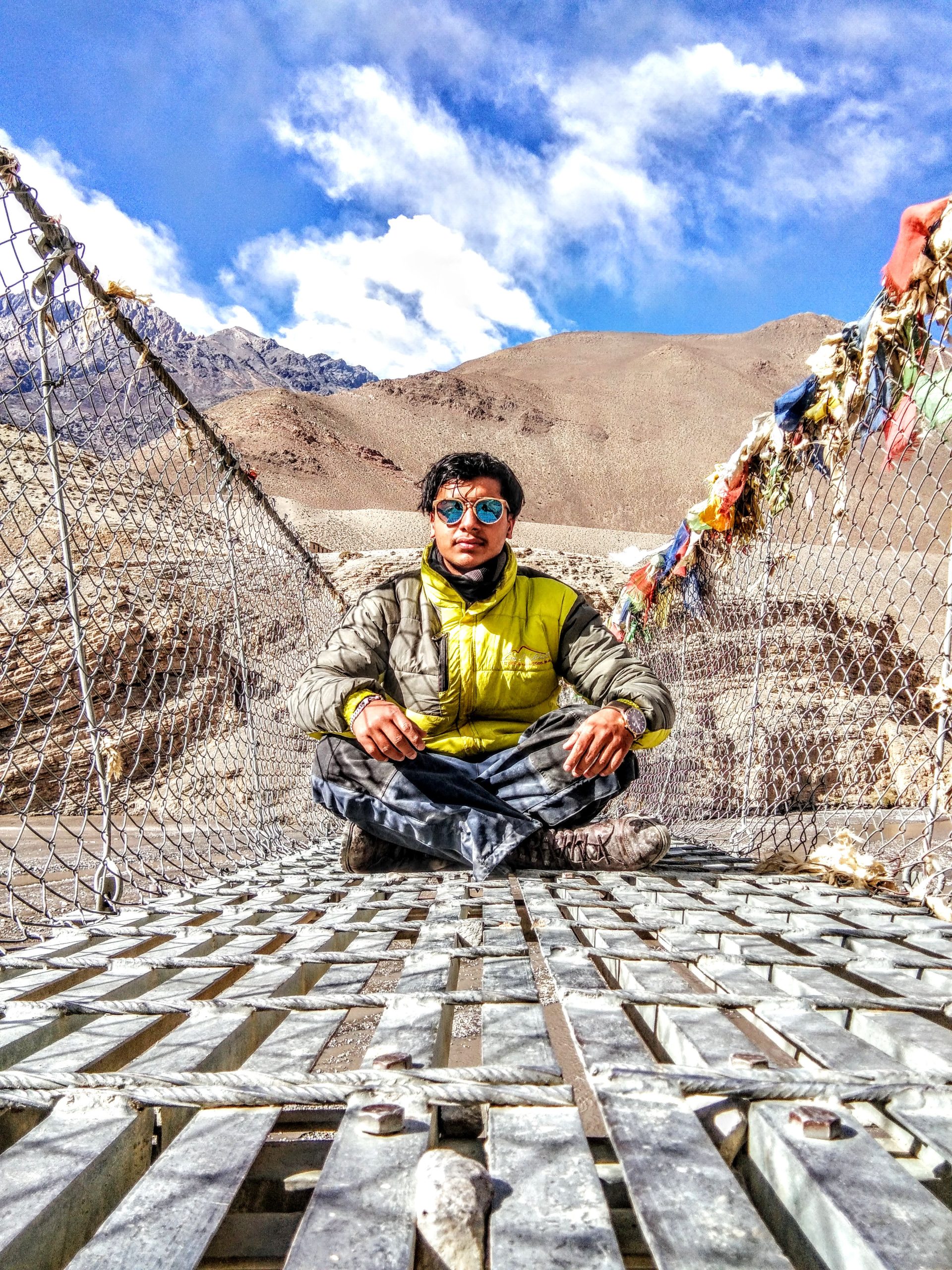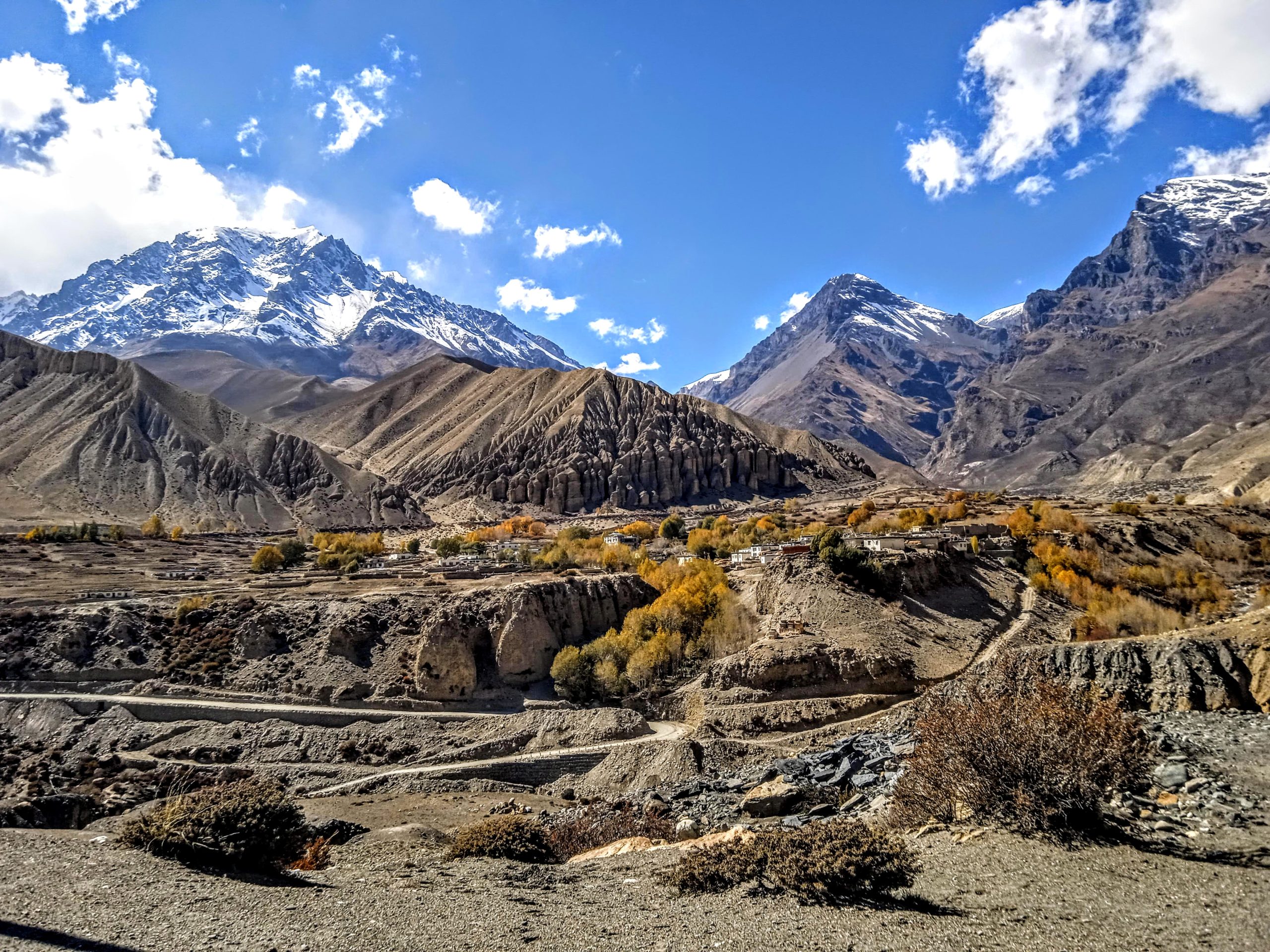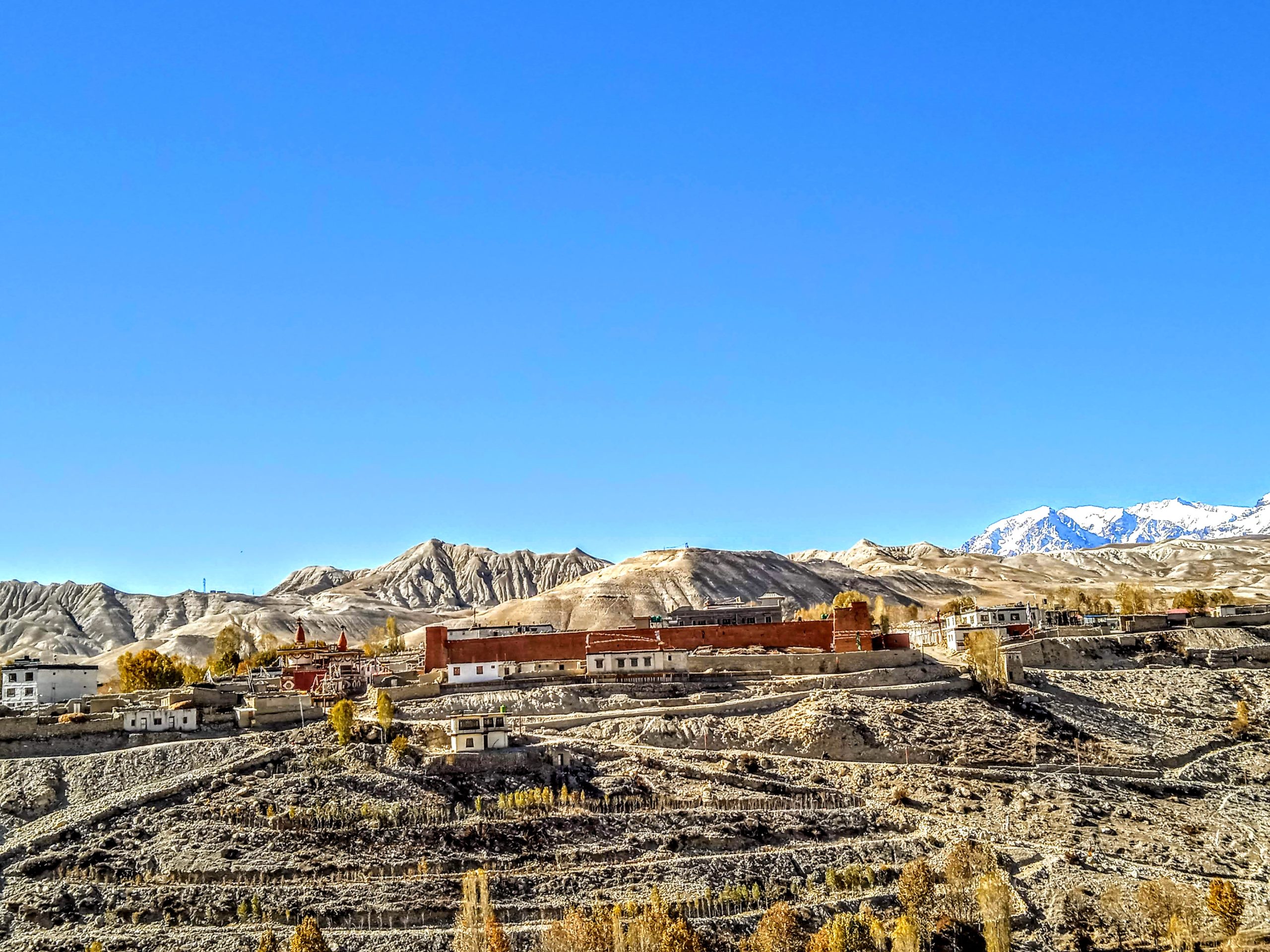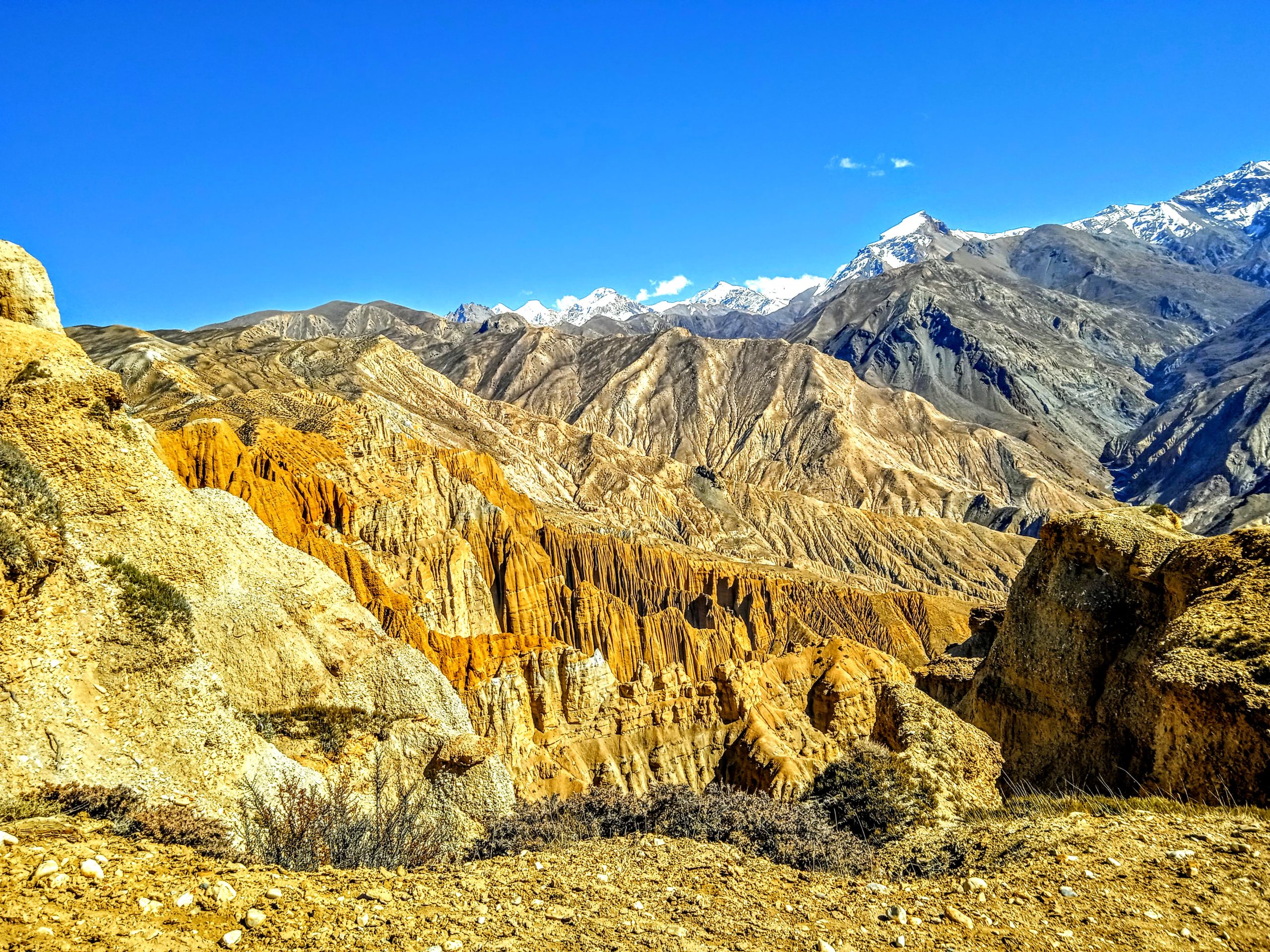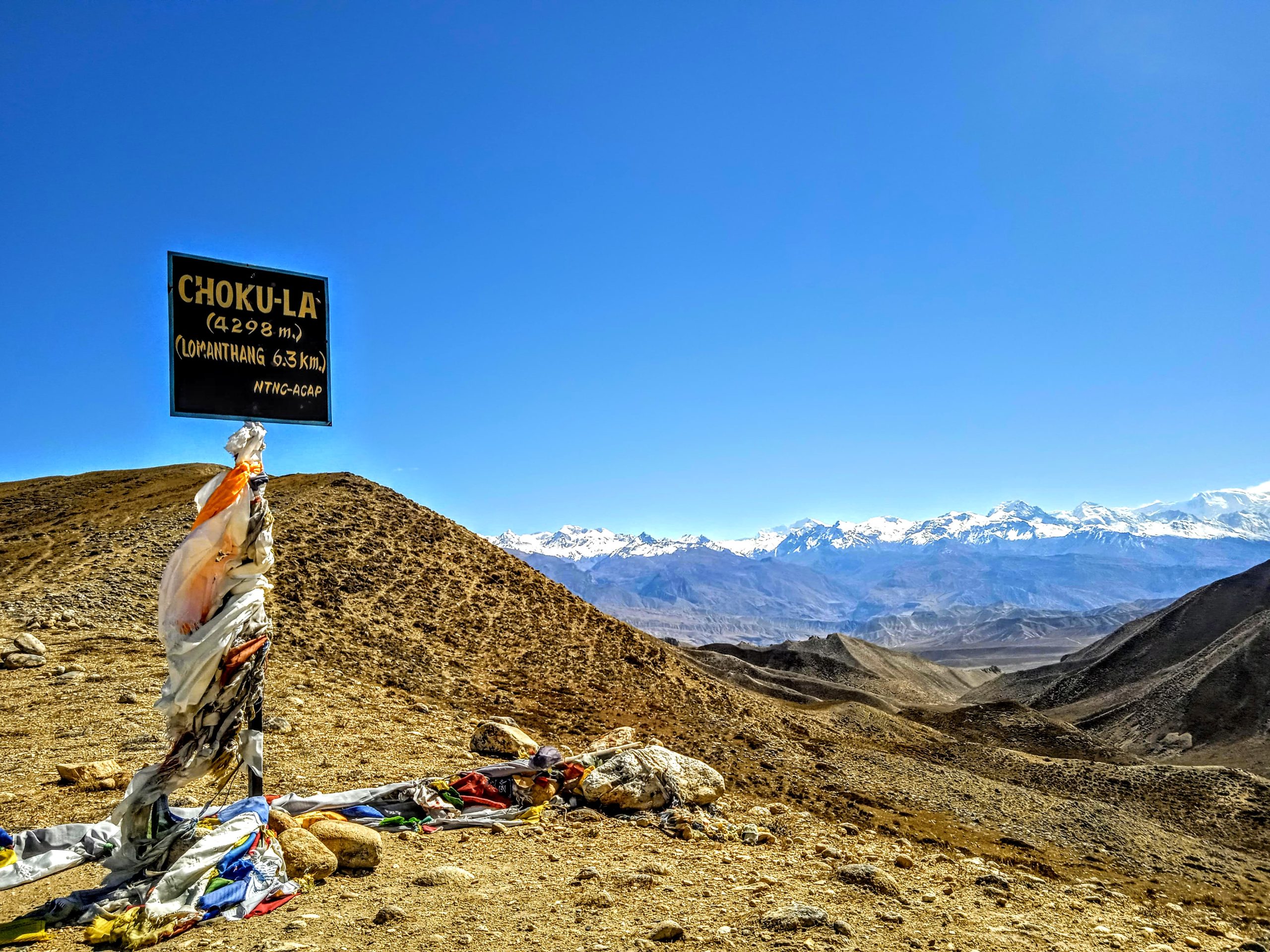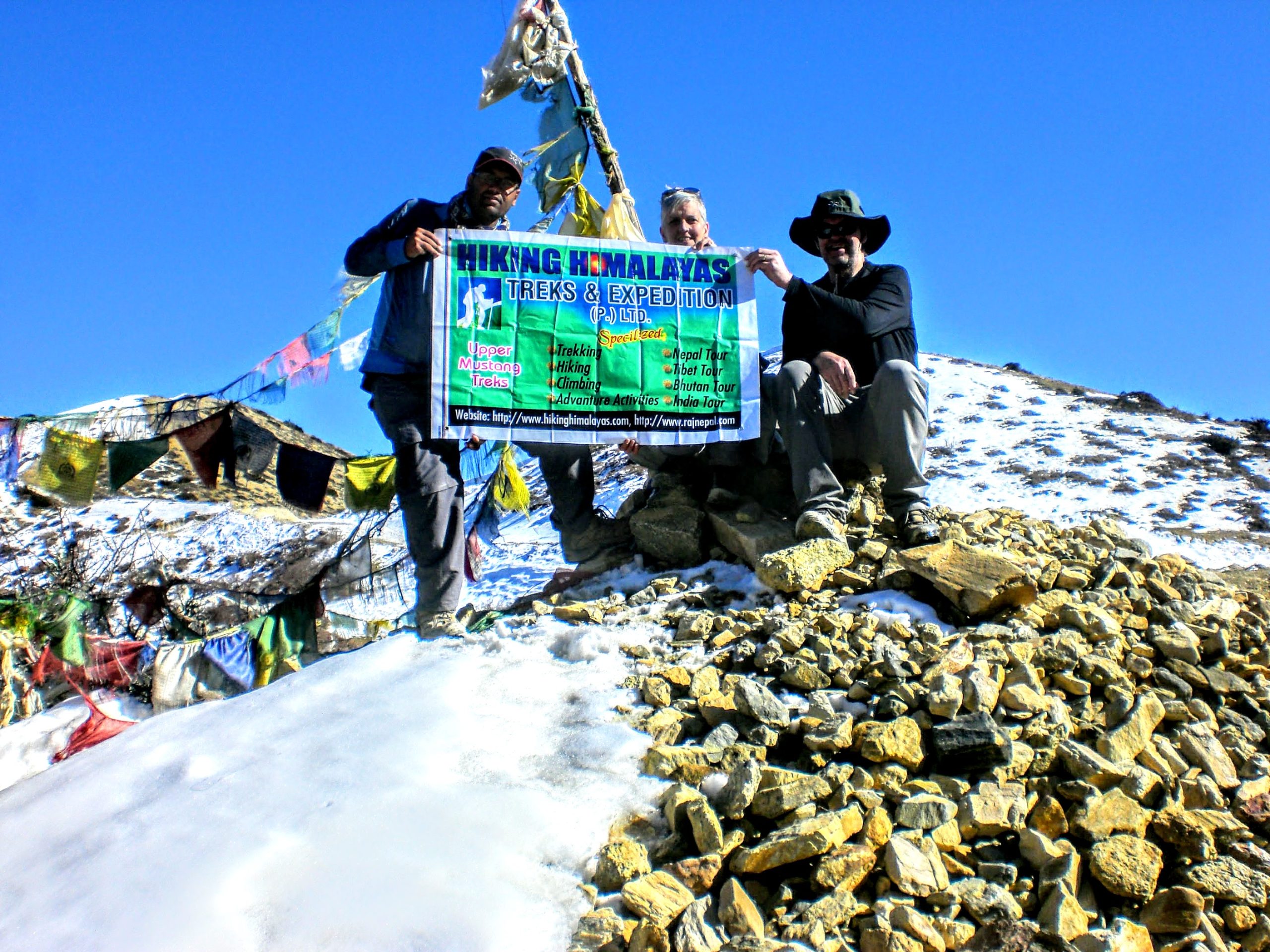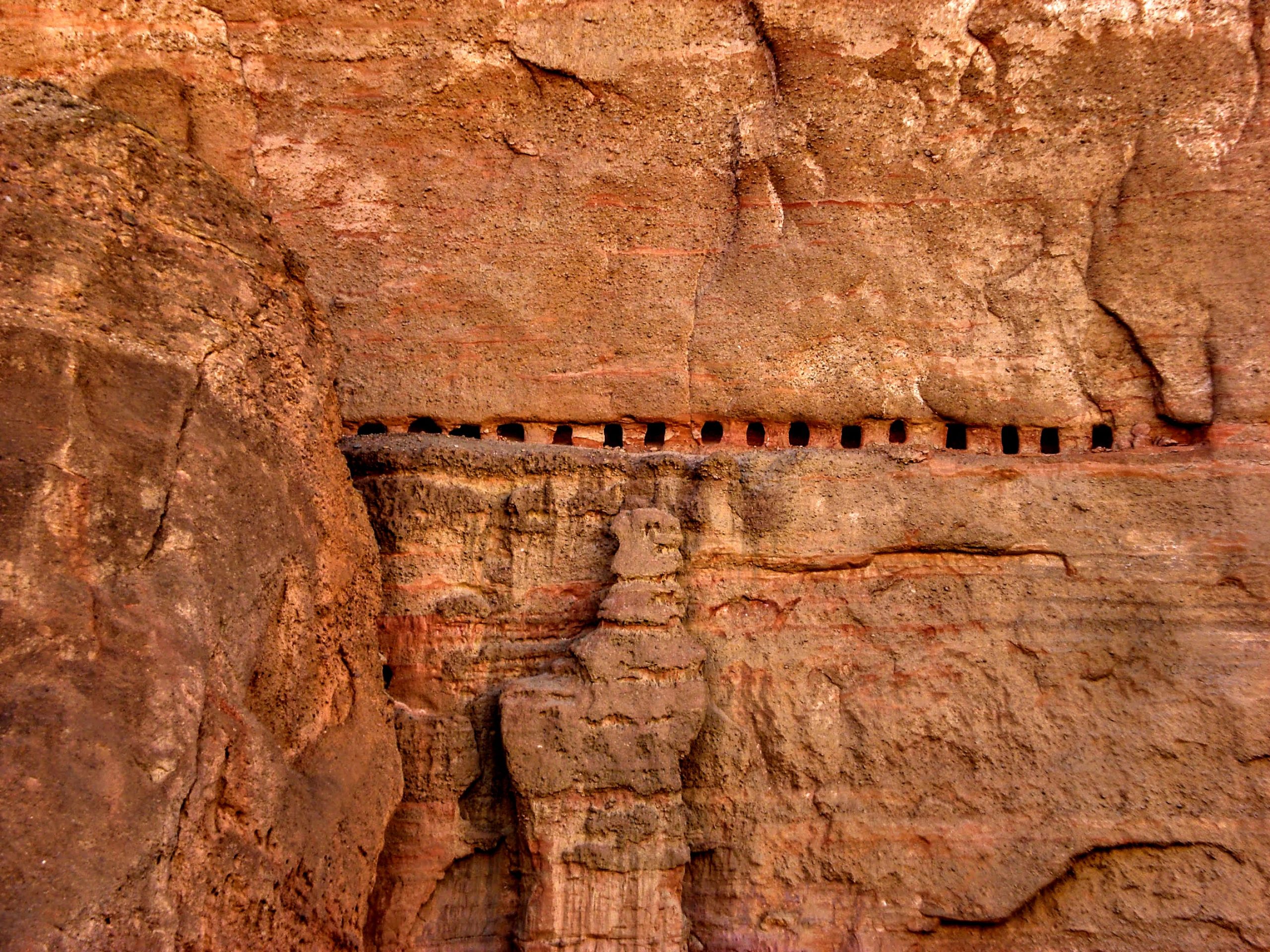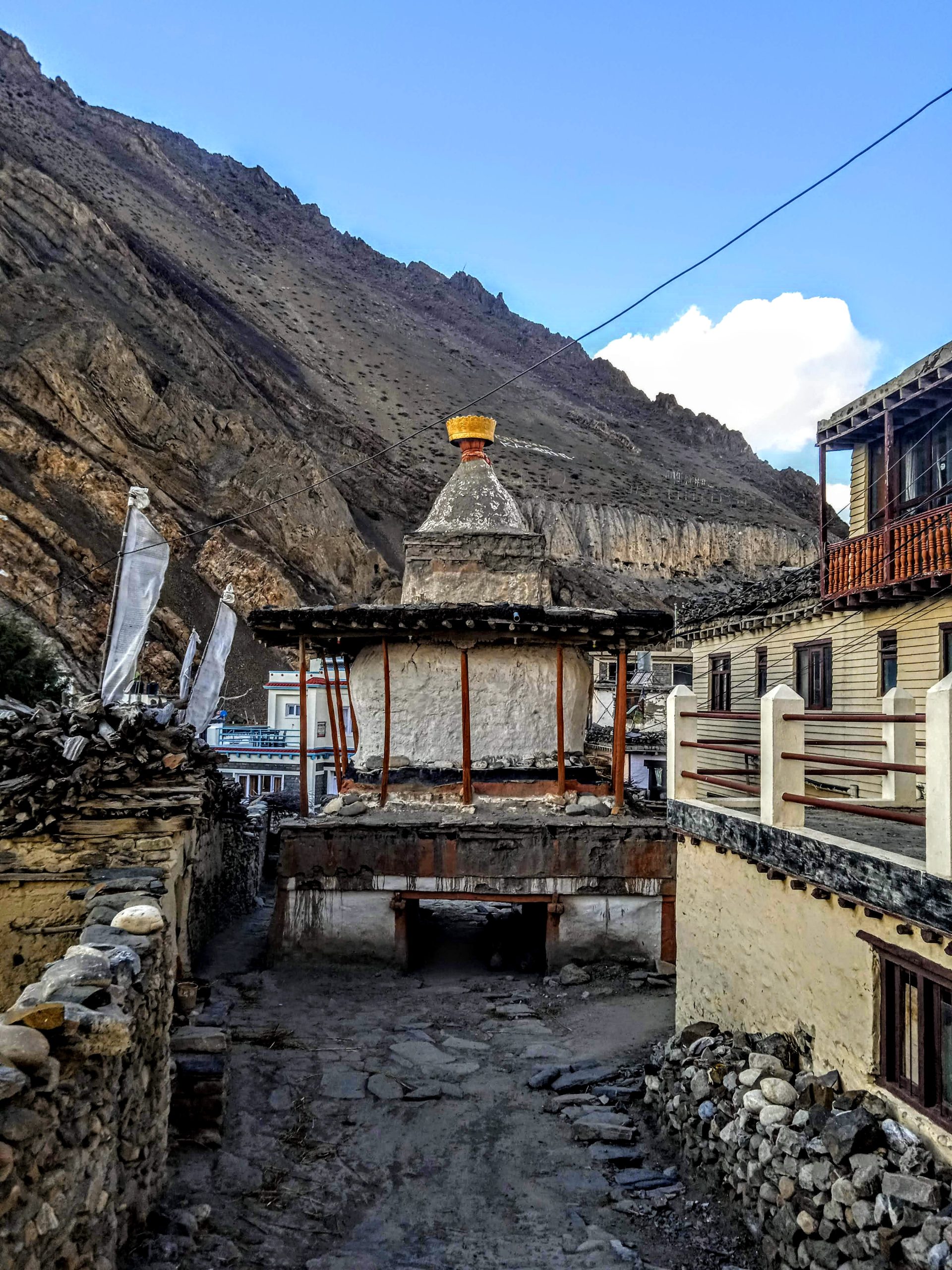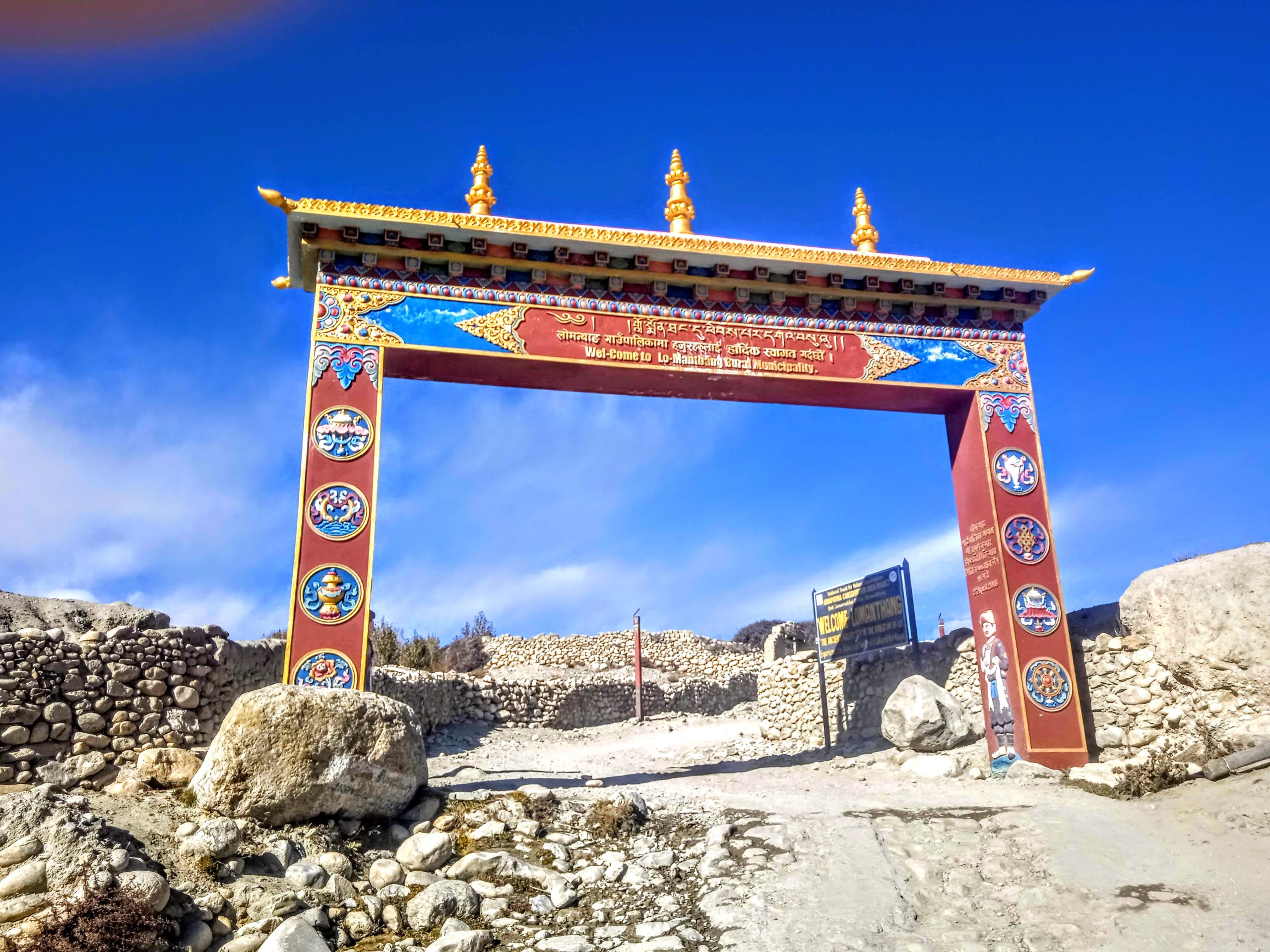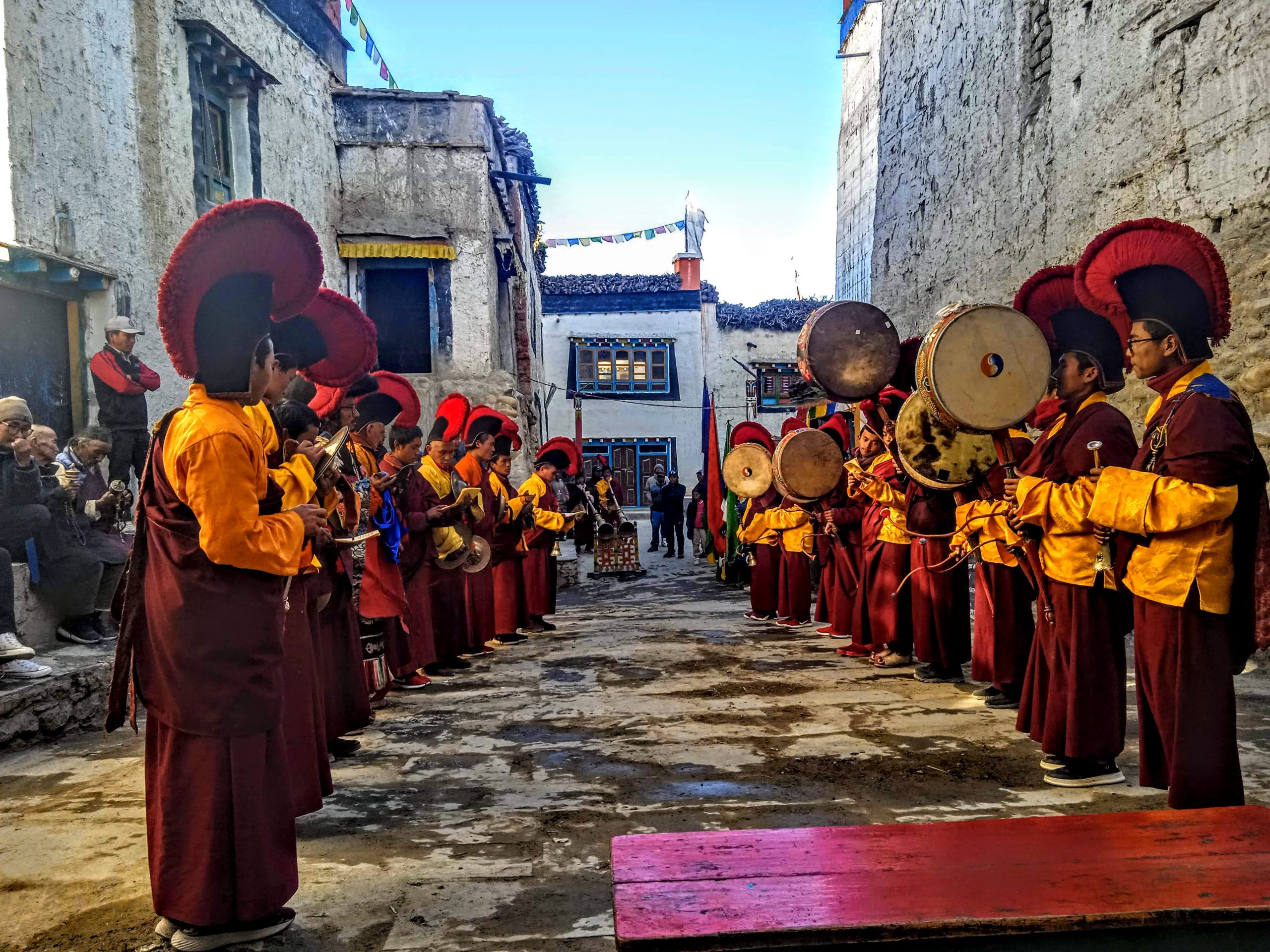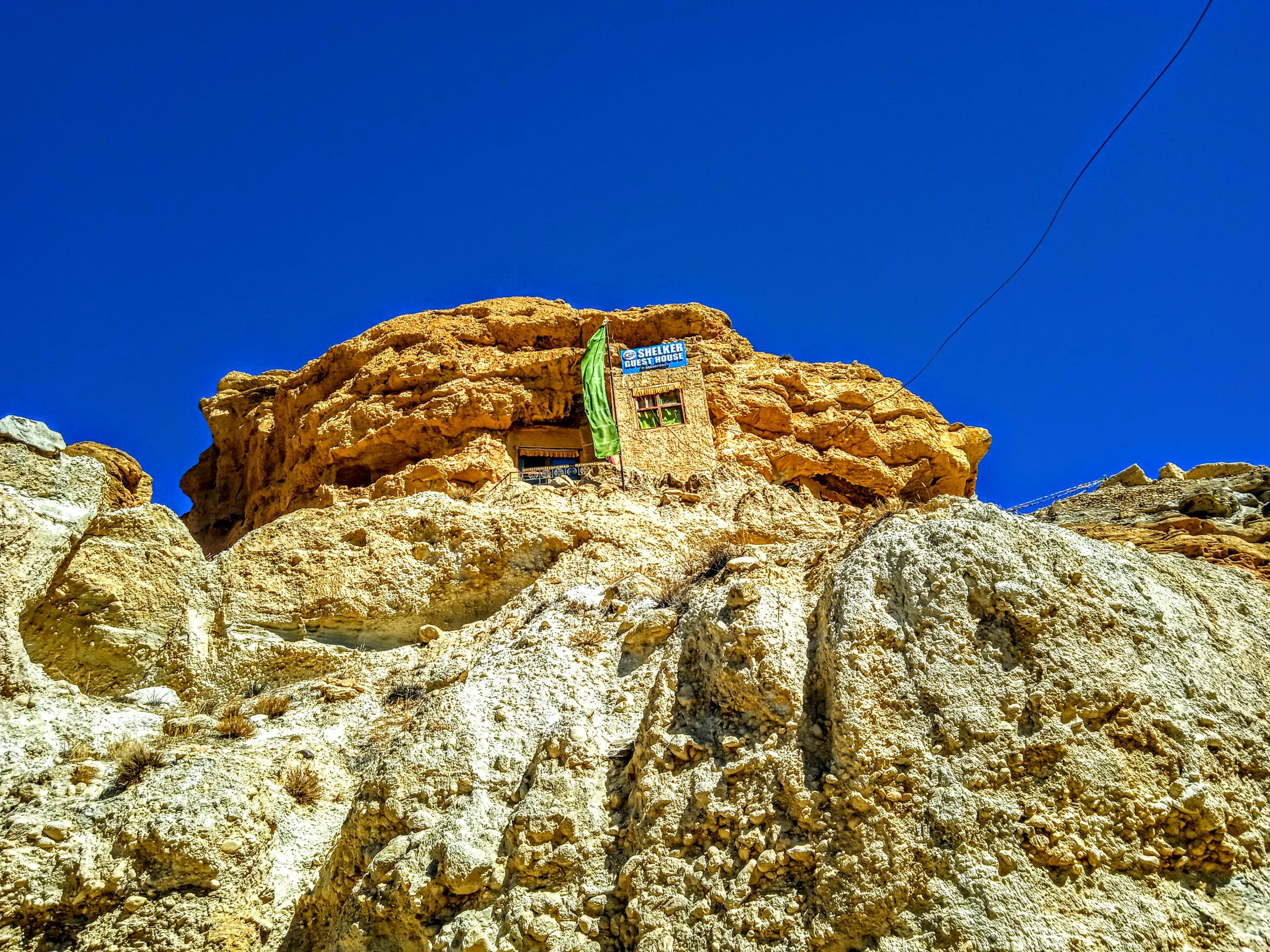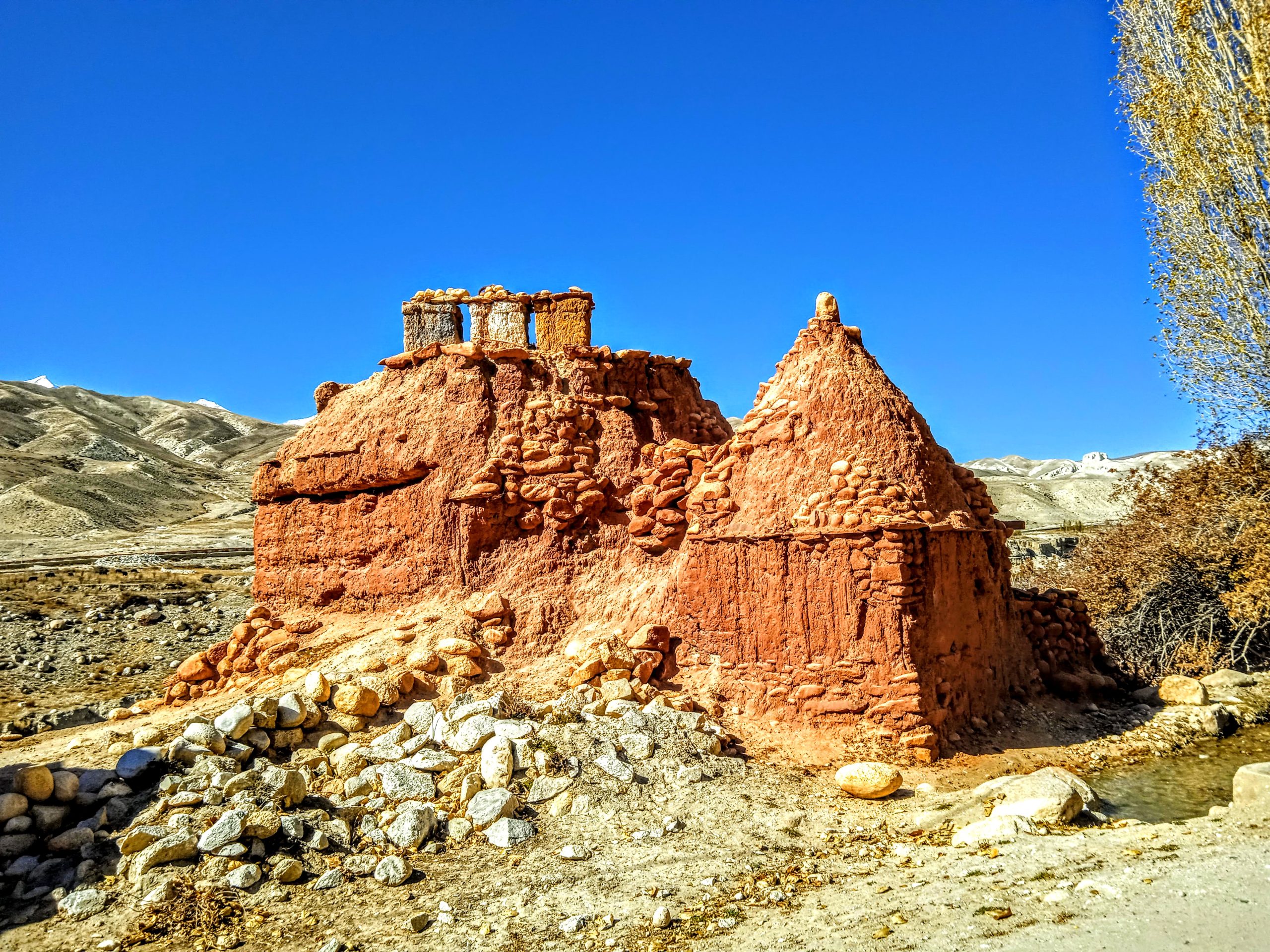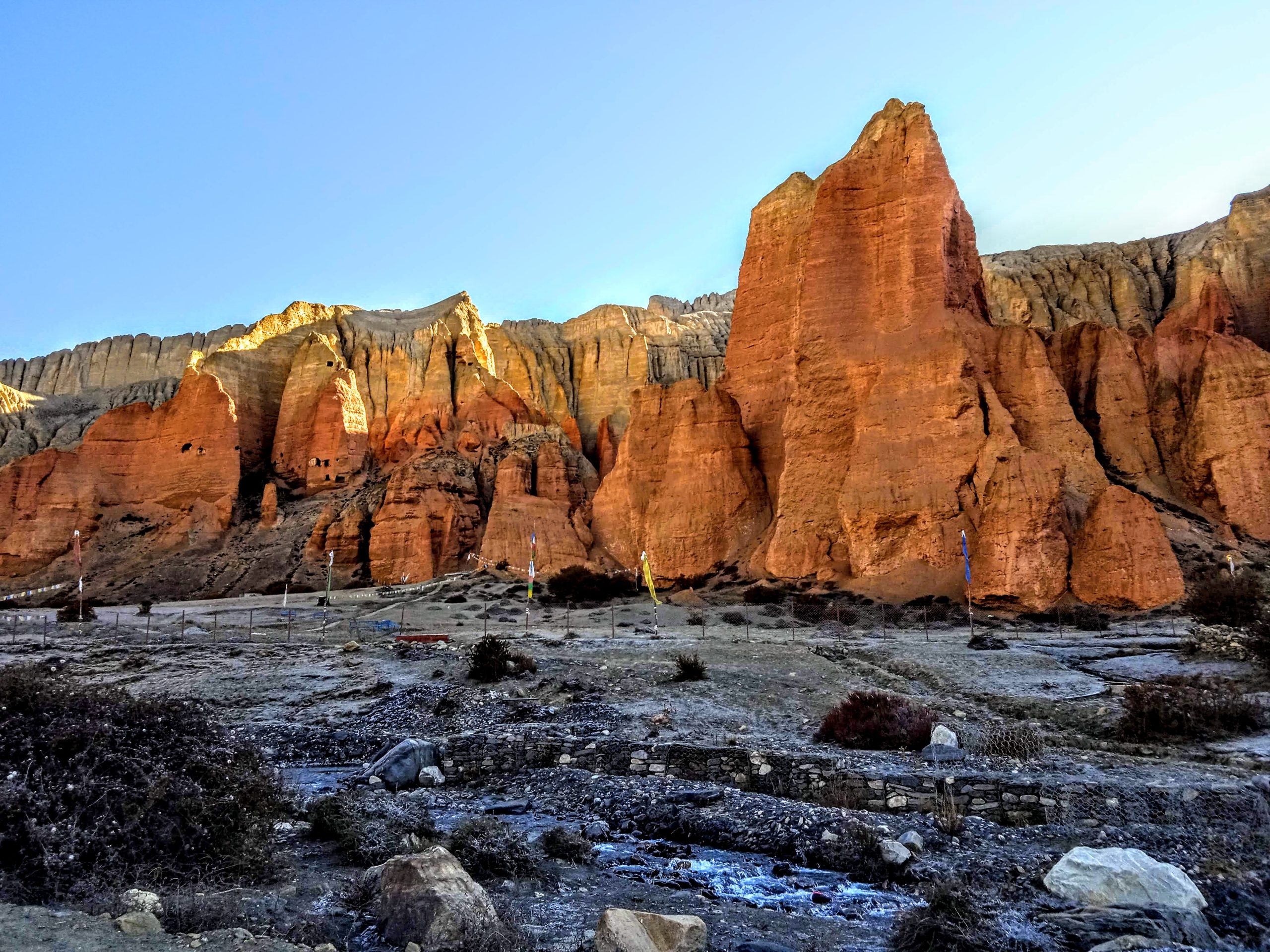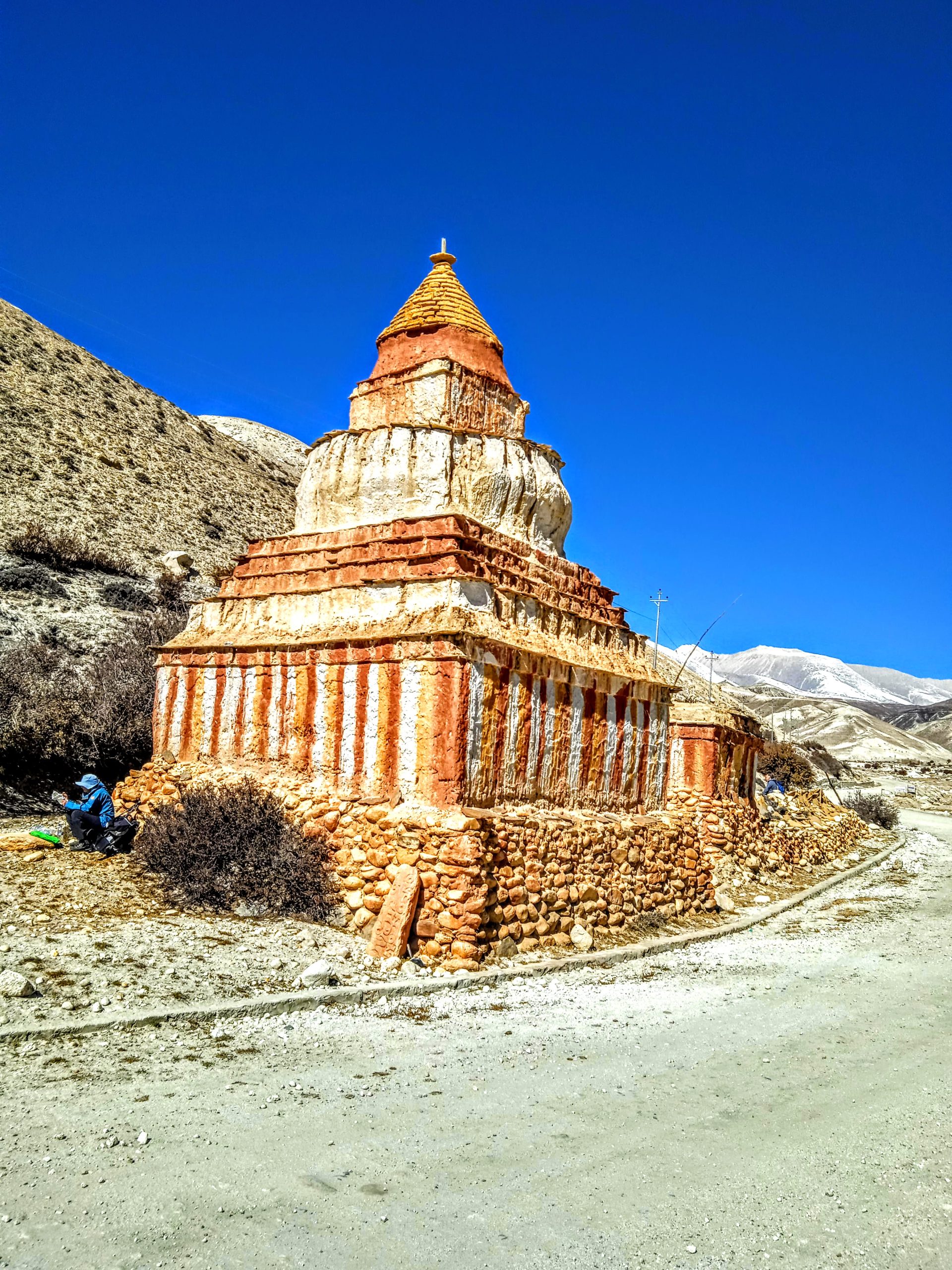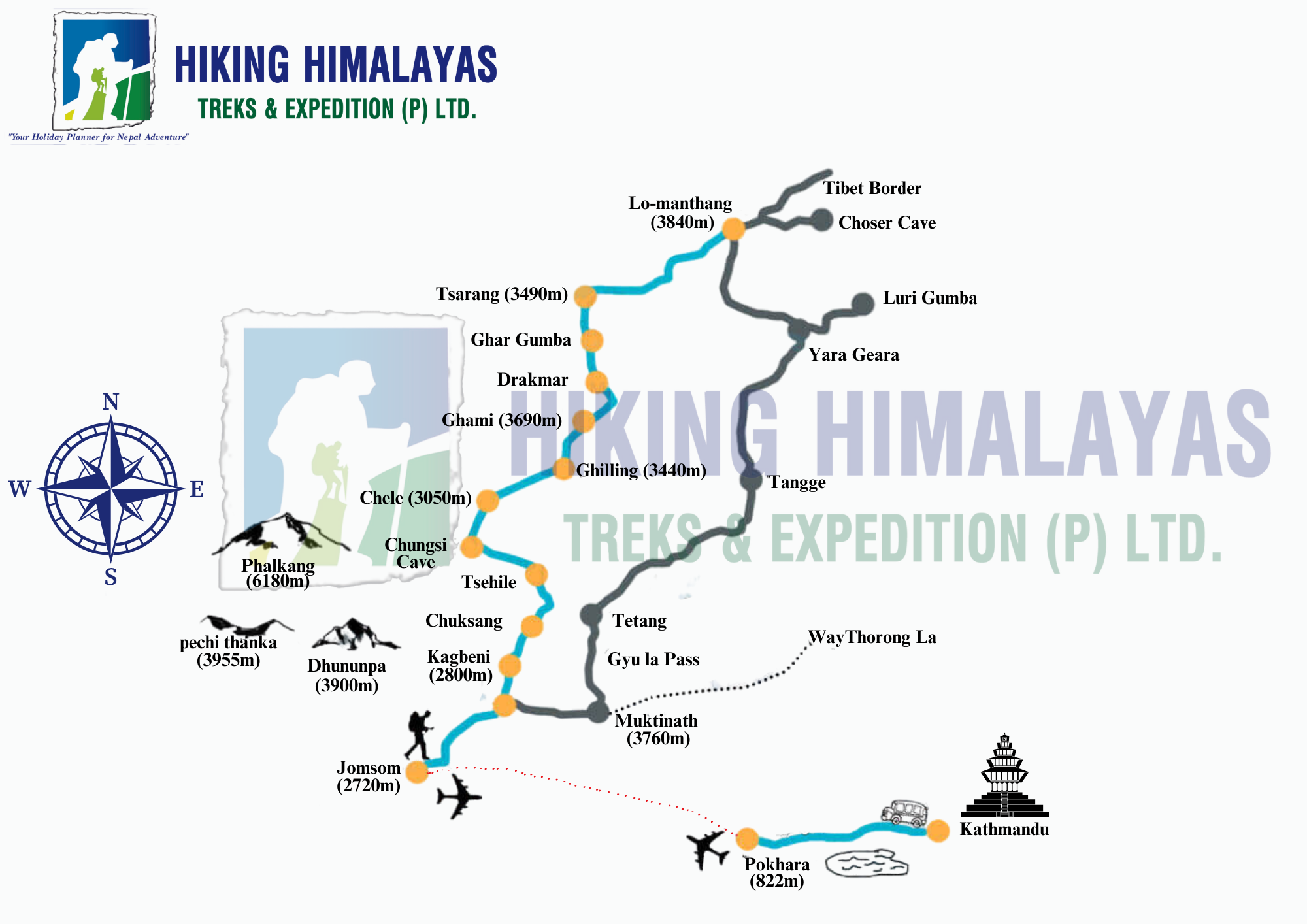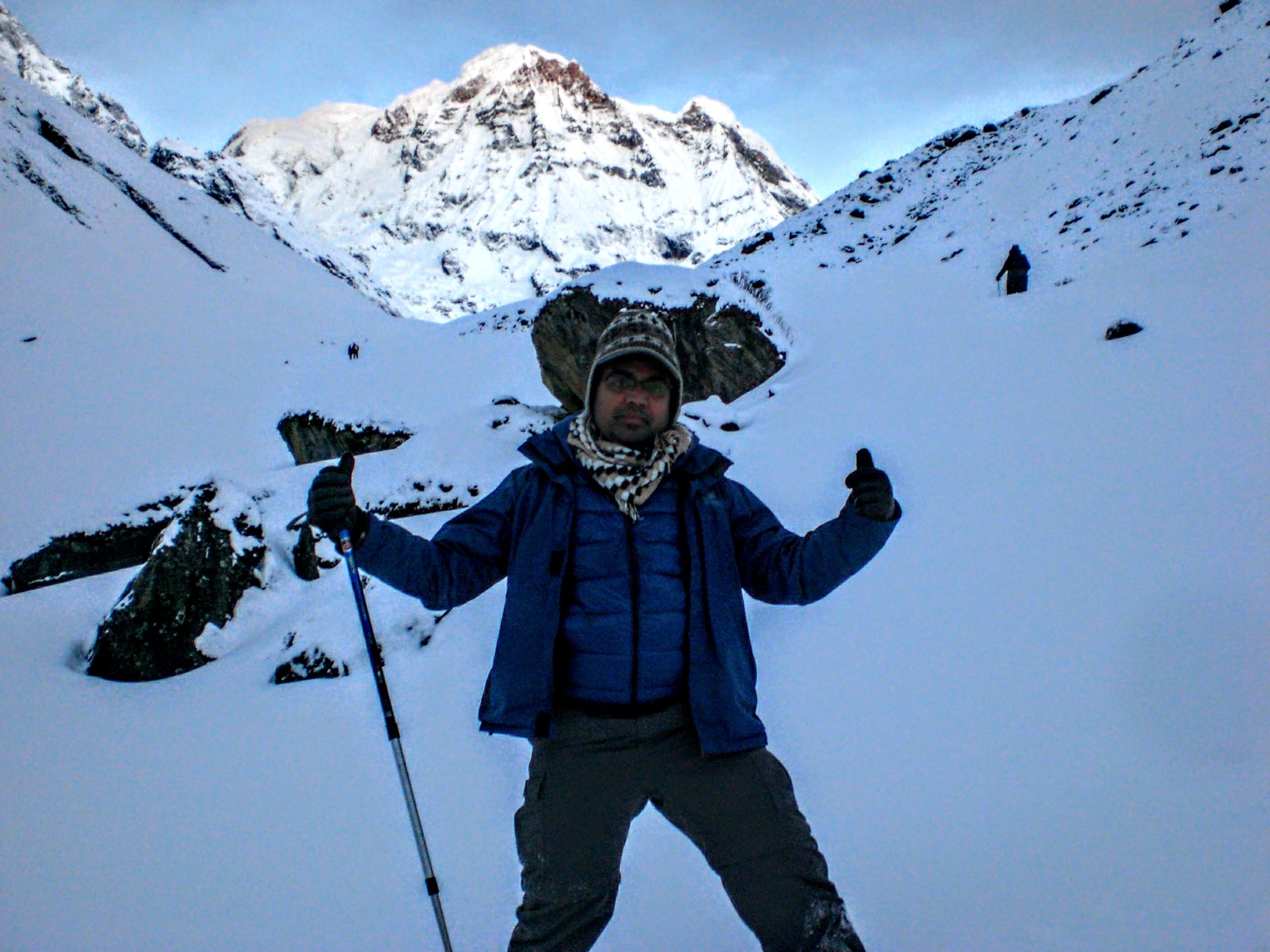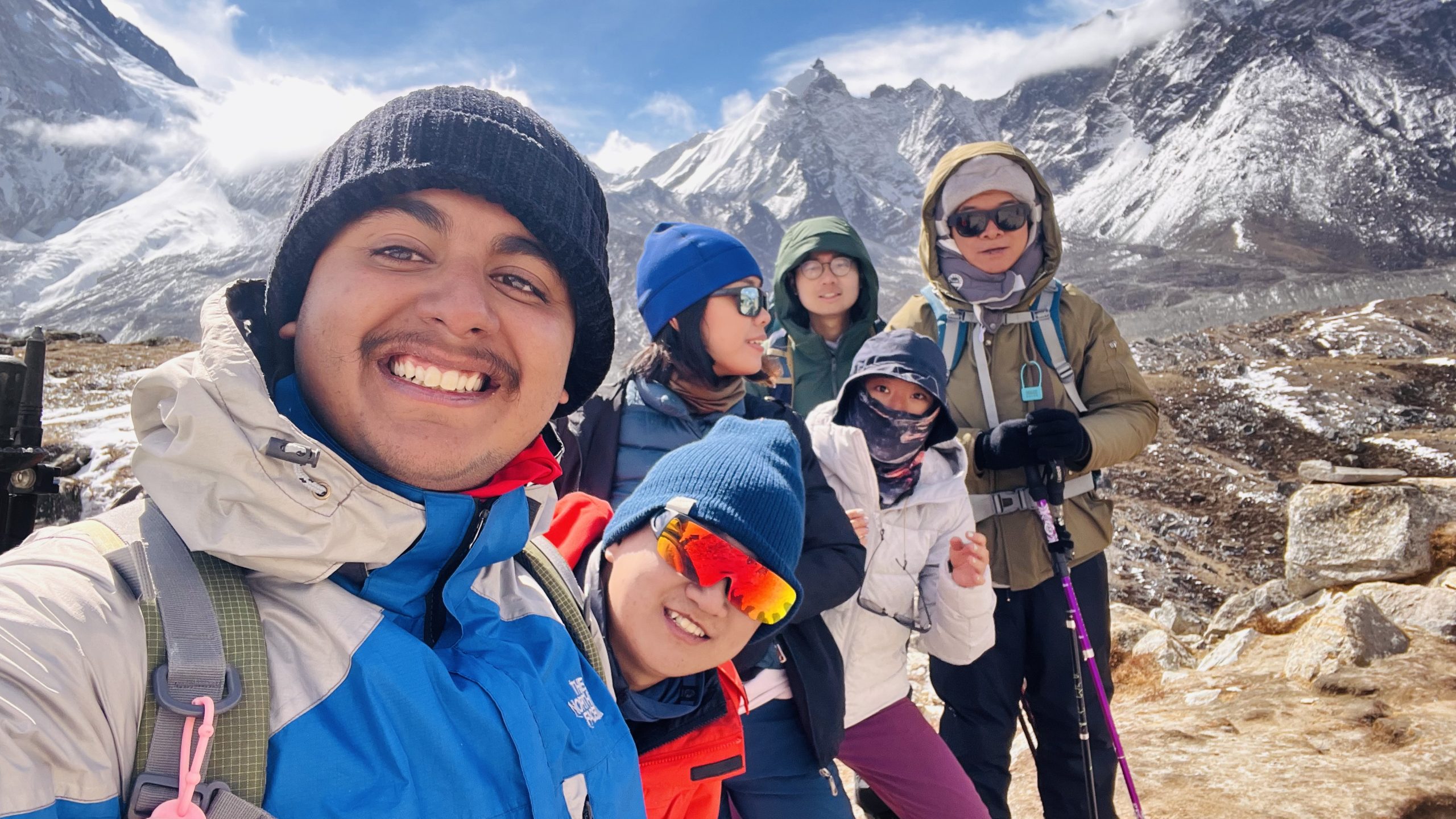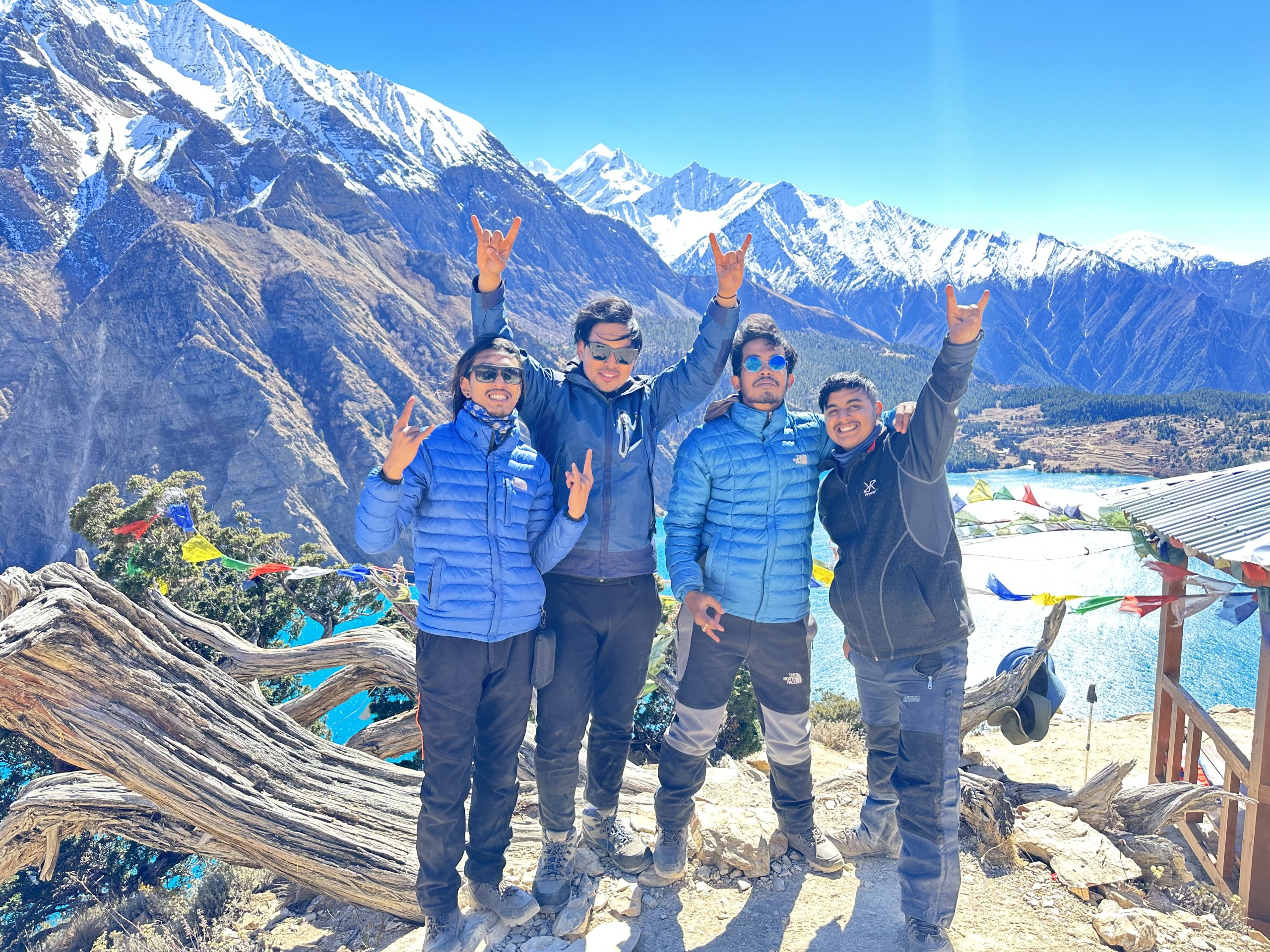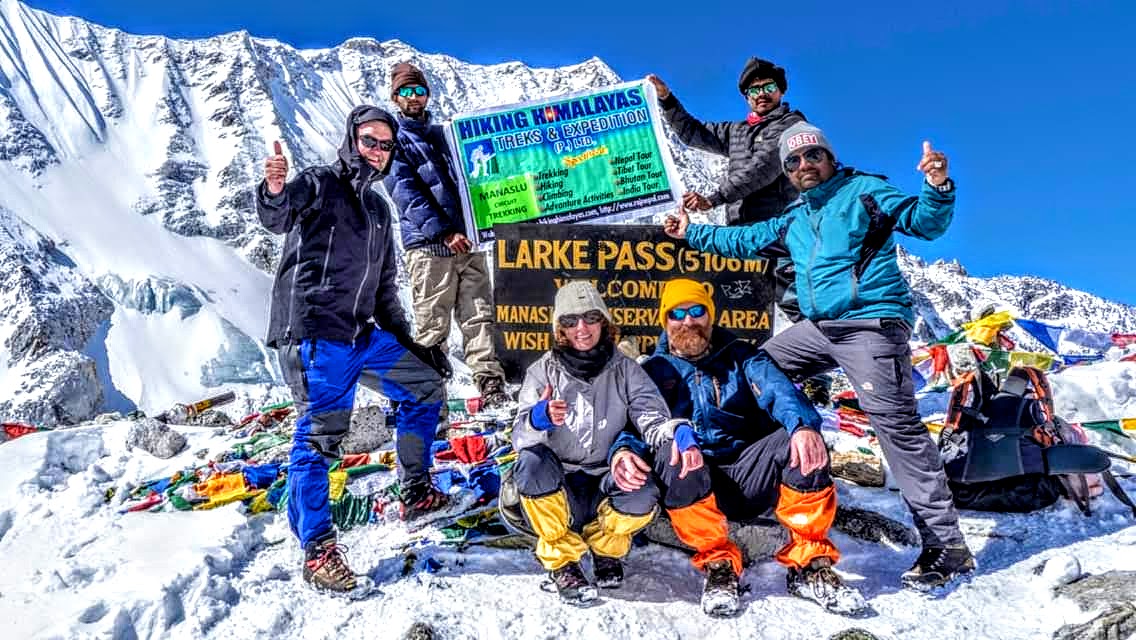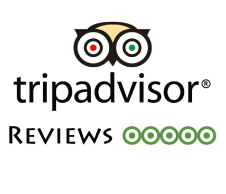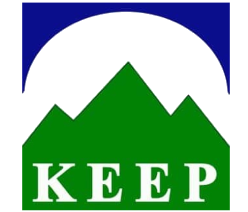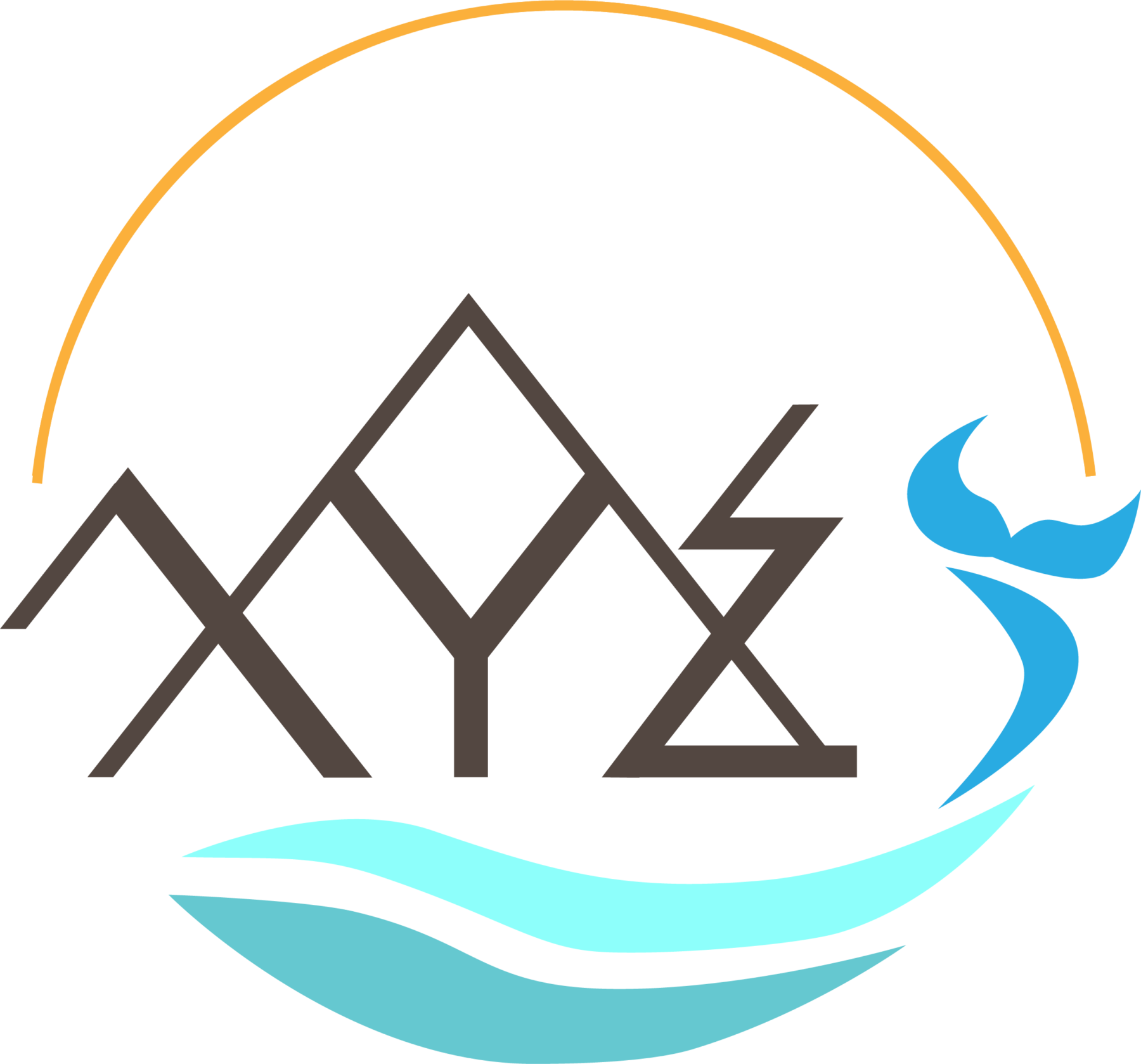Good to Know
- LOCATION
- Mustang Region
- DURATION
- 16 Days
- Difficulty Level
- Moderate
- ARRIVAL ON
- Kathmandu , Nepal
- DEPARTURE FROM
- Kathmandu, Nepal
- TRIP TYPE
- treking
- MAX ALTITUDE
- 4300 meters
- GROUP SIZE
- 2-10
- MEAL
- Breakfast - Lunch - Dinner
- ACCOMMODATION
- Tea-house
- TRANSPORTATION
- By Air/ By Road
- TRIP CODE
- HHTE UMT
Upper Mustang Trek
Trekking Overview and Trip Information
The Upper Mustang Trek is a unique and culturally rich adventure in the Mustang region of Nepal, often referred to as the “Last Forbidden Kingdom.” This trek takes you into a hidden world that was forbidden to foreigners until 1992, offering a glimpse into the traditional Tibetan culture, ancient monasteries, and dramatic desert landscapes. The Kingdom of Lo in the Mustang Region of Nepal is one of the most remote kingdoms on earth. One of the few remaining authentic Tibetan cultures still left in the world, the northern part of this astounding kingdom is open to a small number of fortunate permit holders each year. For the adventure of a lifetime, join us as we explore the dramatic landscape and ancient culture of this isolated region. Sheltered by such massive Himalayan peaks as Annapurna and Dhaulagiri, Mustang is a rugged moonscape of walled monasteries, windy plains, and towns that time forgot. The founder of Tibetan Buddhism, Padmasambhava, came here in the 7th century to defend Buddhism against the forces trying to destroy it. To celebrate his successful battle, he built the temple of Lo Gekhar that still stands today, surviving along with an “unadulterated Tibetan culture” that cannot be found elsewhere. The kingdom of Lo is strategically positioned along the main trade route between Tibet and India. In the 15th-17th centuries, traders carried salt and wool to India and spices and grain back to Tibet, following the course of the mighty Kali Gandaki River. The Kingdom of Lo was part of Tibet until it joined with Nepal in 1790. This district is the lone bastion of traditional Tibetan Buddhist culture and religion in predominantly Hindu Nepal. The kingdom was closed to outsiders in 1960 when eastern Tibetans began their fight against Chinese forces. The region was not reopened to outsiders until 1991, and the Upper Mustang is still closed to casual visitors. A small number of permits are issued each year to trekking companies, and a government liaison accompanies each trekking party in the restricted area of the Upper Mustang. Mustang enjoys a longer trekking season than the rest of Nepal because it lies beneath the rain shadow of the Himalayas. It is not subject to the monsoons that hit other parts of the country and make trekking difficult but because of the windy plains and arid landscape, this region is more rugged than other trekking areas of Nepal.
Geographical knowledge of the land you will tread:
The Upper Mustang region, which you will explore during the Upper Mustang Trek, is a distinct and geographically fascinating area of Nepal. Here is some geographical knowledge about this land:
- 1. Location: Upper Mustang is located in the north-central part of Nepal, bordering the Tibetan Plateau to the north. It is part of the Gandaki Province and lies in the rain shadow of the Annapurna and Dhaulagiri mountain ranges.
- 2. Altitude: The region’s altitude varies significantly along the trekking route. The trek starts at around 2,800 meters (9,186 feet) in Kagbeni and reaches its highest point at the Lo La Pass, which is approximately 3,950 meters (12,960 feet) above sea level. Lo Manthang, the walled city and focal point of the trek, sits at around 3,800 meters (12,467 feet).
- 3. Rain Shadow: Upper Mustang is situated in a rain shadow region, meaning it receives very little rainfall and experiences a semi-arid climate. This unique geographical position results in the barren, desert-like landscapes with eroded canyons, caves, and dramatic rock formations.
- 4. Kali Gandaki River: The Kali Gandaki River, one of Nepal’s major rivers, flows through the Upper Mustang region. The trek follows the course of this river for much of its duration, providing a vital water source for local villages and their agricultural activities.
- 5. Unique Landscapes: The geographical features of Upper Mustang are distinct from other trekking regions in Nepal. You’ll encounter surreal and dramatic landscapes, including deep gorges, red and ocher cliffs, and windswept plateaus.
- 6. Geological Formations: The region is known for its unique geological formations, including the red and orange-colored cliffs, caves, and wind-eroded canyons. The terrain is unlike any other in Nepal and has been shaped by millions of years of geological processes.
- 7. Trans-Himalayan Region: Upper Mustang is often referred to as a Trans-Himalayan region because of its proximity to the Tibetan Plateau. The culture, architecture, and landscapes of Upper Mustang reflect strong Tibetan influences.
- 8. Tectonic Activity: The region is part of the larger Himalayan mountain range, which is still experiencing tectonic activity. This geological activity has resulted in the formation of the high peaks and deep valleys in the area.
- 9. Glacial Rivers: While Upper Mustang is primarily arid and semi-desert, some glacial rivers and streams flow through the region, providing water for local agriculture and adding to the diverse geography.
- 10. Walled City of Lo Manthang: The trek’s geographical centerpiece is the ancient walled city of Lo Manthang, surrounded by high cliffs and accessed through a narrow gate. This city is rich in history and culture and offers a unique experience for trekkers.
Understanding the unique geography of Upper Mustang is crucial for planning your trek, as it impacts the climate, culture, and landscapes you will encounter along the way. It’s a region that offers a blend of natural beauty and cultural richness set in a distinct geographical setting.
Trail Overview and Cultural Experience Along the Upper Mustang Trek:
The Upper Mustang Trek offers a remarkable combination of stunning landscapes and a deep cultural immersion. Here’s an overview of the trail and the cultural experiences you can expect along the way:
- 1. Starting Point: The trek often begins in Jomsom, which is accessible by a short flight from Pokhara or a drive and hike from Nayapul via the Annapurna Circuit. Jomsom is a major town in the region and serves as the gateway to Upper Mustang.
- 2. Kagbeni: The trek usually starts with a hike from Jomsom to Kagbeni, a picturesque village on the banks of the Kali Gandaki River. Kagbeni is the entry point for Upper Mustang, and it’s where you’ll need to check your permits.
- 3. Chele: As you move deeper into Upper Mustang, you’ll pass through several charming villages like Chele, which is known for its narrow alleyways and ancient buildings.
- 4. Ghiling: The trail continues through villages like Ghiling, offering scenic views of the surrounding landscapes. Along the way, you’ll encounter unique geological formations and dramatic cliffs.
- 5. Tsarang: Tsarang is known for its historical significance and the Tsarang Monastery, which is a must-visit site on the trek.
- 6. Lo Manthang: The walled city of Lo Manthang is the cultural and geographical highlight of the trek. This ancient city, with its centuries-old architecture and royal palace, is rich in Tibetan culture and traditions. You’ll have the chance to explore narrow alleys, visit monasteries, and interact with the friendly locals.
- 7. Lo Gekar: En route to Lo Manthang, you can visit the Lo Gekar Monastery, which is one of the oldest in the region and boasts a rich history.
- 8. Lo La Pass: The trek involves crossing the Lo La Pass, which offers panoramic views of the Mustang region and surrounding peaks.
- 9. Return Route: After exploring Lo Manthang and its surroundings, you’ll retrace your steps, passing through the same villages on your way back to Jomsom.
Cultural Experiences:
- 1. Tibetan Influence: The culture of Upper Mustang is heavily influenced by Tibetan Buddhism. You’ll see Tibetan-style monasteries, prayer wheels, and mani walls adorned with Buddhist mantras.
- 2. Monasteries and Gompas: The region is dotted with ancient monasteries and gompas, some dating back centuries. These are not only places of worship but also repositories of art, history, and culture.
- 3. Tiji Festival: If you time your trek right, you might have the chance to witness the Tiji Festival, a three-day annual event in Lo Manthang that celebrates the triumph of good over evil. It involves colorful masked dances, rituals, and cultural performances.
- 4. Local Traditions: Engage with the local Mustangi people and learn about their customs, traditions, and daily way of life. Their hospitality is warm, and they are known for preserving their unique culture.
- 5. Ancient Architecture: The architecture in Upper Mustang is a testament to its rich history. You’ll see intricately designed buildings, palaces, and fortresses that reflect a blend of Tibetan and Nepali styles.
- 6. Trade Route History: Upper Mustang was once an important trade route between Tibet and Nepal. You can explore ancient salt mines and trading posts that harken back to its historical significance.
- 7. Stunning Landscapes: While the culture is a highlight, the stark and dramatic landscapes, including deep canyons, cliffs, and the barren terrain, provide a unique backdrop to your cultural exploration.
The Upper Mustang Trek is not just a journey through stunning terrain; it’s a cultural odyssey into a world where ancient traditions are still very much alive. The combination of dramatic landscapes and rich cultural experiences makes it a truly unforgettable adventure.
Trip Duration:
The Upper Mustang Trek typically takes around 14 to 17 days, depending on the starting and ending points, as well as side trips and acclimatization days.
Permits:
To enter Upper Mustang, foreign travelers must obtain a special trekking permit called the “Upper Mustang Restricted Area Permit.” Additionally, you’ll need an Annapurna Conservation Area Permit (ACAP) and a Trekker’s Information Management System (TIMS) card. It’s advisable to work with a reputable trekking agency to assist you in obtaining these permits.
Best Time to Trek:
The best time to trek in Upper Mustang is during the spring (March to May) and autumn (September to November) seasons when the weather is relatively stable, and the skies are clear. These periods offer the best conditions for trekking and clear views of the Himalayas.
Trek Difficulty:
The Upper Mustang Trek is considered a moderate trek in terms of physical demand. However, the high altitude and remote nature of the region require good fitness and acclimatization. Trekkers should be prepared for long days of walking.
Accommodation:
Tea houses and lodges are available along the trekking route, providing basic but comfortable accommodations. While the facilities are simpler than in more popular trekking regions, they offer a cozy place to rest and dine.
Packing List:
Ensure you have appropriate clothing for varying weather conditions, including warm layers and rain gear. Trekking poles, a sturdy backpack, and a sleeping bag suitable for cold weather are essential items.
Safety Considerations:
Travelers are encouraged to trek with a registered guide and porter for safety and to navigate the restricted area’s regulations effectively. Proper acclimatization is crucial to avoid altitude sickness.
Facilities and Accommodation on the Upper Mustang Trek
Accommodation and facilities along the Upper Mustang Trek are quite different from what you might find in more popular trekking regions of Nepal. The trek takes you through remote and culturally distinct areas where the facilities are simpler. Here’s what you can expect in terms of accommodation and facilities on the Upper Mustang Trek:
Accommodation:
- 1. Tea Houses and Lodges: Along the trekking route, you’ll find basic tea houses and lodges in the villages. These accommodations provide a warm place to sleep, meals, and sometimes hot showers. The quality and comfort of these lodges can vary, but they usually offer cozy and clean rooms.
- 2. Shared Rooms: Most tea houses and lodges offer shared rooms with twin beds. While some may have private rooms available, it’s advisable to be prepared for shared accommodation, especially during peak trekking seasons.
- 3. Bedding: Tea houses typically provide mattresses, blankets, and pillows. However, it’s a good idea to bring a sleeping bag suitable for cold temperatures, as it can get chilly, especially at higher altitudes.
- 4. Basic Amenities: Accommodations in Upper Mustang have shared bathrooms with squat toilets. Hot showers may be available, but they often come with an additional cost. Toilet paper may not always be provided, so it’s wise to carry your own.
- 5. Dining Areas: Lodges have communal dining areas where trekkers can enjoy meals and socialize. The menus typically offer a variety of Nepali and Tibetan dishes, such as dal bhat (rice and lentils), momos (dumplings), noodles, and local specialties.
Facilities:
- 1. Electricity: Electricity is available in most villages along the route, but it may be limited to a few hours in the evening. Charging your devices may incur an extra fee.
- 2. Internet and Mobile Coverage: While some villages have limited internet access and mobile coverage, it can be unreliable and slow. Don’t rely on it for communication during your trek.
- 3. ATMs: There are no ATMs in Upper Mustang, so it’s essential to carry enough cash for your entire trek, including permits, meals, and any additional expenses.
- 4. Medical Facilities: Basic medical facilities are available in larger villages, but for serious medical issues or emergencies, you may need to be evacuated to a hospital in Jomsom or Pokhara.
- 5. Shopping: You can find some basic supplies, snacks, and souvenirs in the villages, but the selection is limited. It’s best to carry any essential trekking gear and snacks with you from Jomsom or Pokhara.
- 6. Transport: The trekking route is accessible by road up to Jomsom. From Jomsom, you can fly or trek to Kagbeni to begin your Upper Mustang Trek. Return transportation can also be arranged from Jomsom.
It’s important to note that facilities in Upper Mustang are more basic compared to more popular trekking regions like the Annapurna or Everest. However, this simplicity adds to the authenticity of the experience and allows you to immerse yourself in the culture and traditions of the region. Trekkers should be prepared for a rustic but comfortable experience and bring essential items like warm clothing and a good sleeping bag to ensure a comfortable journey.
Can Beginners Trek to Upper Mustang Trek?
Trekking to Upper Mustang as a beginner is possible, but it comes with certain challenges and considerations. While the Upper Mustang Trek offers a unique cultural and geographical experience, it’s important for beginners to be well-prepared. First and foremost, be aware of the permit requirements, including the Upper Mustang Restricted Area Permit, Annapurna Conservation Area Permit (ACAP), and Trekker’s Information Management System (TIMS) card. These permits can be complex to obtain, so enlisting the help of a reputable trekking agency or guide is advisable. Altitude is another crucial factor to consider, as the trek reaches heights of over 3,800 meters (12,467 feet) and involves crossing the Lo La Pass at approximately 3,950 meters (12,960 feet). Adequate acclimatization is essential, and beginners should pay close attention to their bodies to avoid altitude sickness. Physical fitness is also important, as the terrain can be challenging. The best seasons for beginners to trek to Upper Mustang are spring and autumn when the weather is more stable. While the accommodations are basic, shared rooms in tea houses and lodges provide a comfortable place to rest and meals. Having some prior trekking experience, even at lower altitudes, can be beneficial. Consider joining a guided trek to receive assistance with navigation, permits, and cultural insights, enhancing your overall trekking experience in this captivating region of Nepal.
Alternative Treks You Can Consider in Upper Mustang Trek
While the Upper Mustang Trek is a fantastic choice for those seeking a unique and culturally rich trekking experience, there are alternative treks in the region and nearby areas that you can consider if you want different options. Here are some alternatives:
- 1. Lower Mustang Trek: If you’re looking for a shorter and less remote trek in the same region, consider the Lower Mustang Trek. This trek starts and ends in Jomsom and offers stunning views of the Annapurna and Dhaulagiri ranges while passing through charming villages like Marpha and Tukuche.
- 2. Nar Phu Valley Trek: Located in the Annapurna region, the Nar Phu Valley Trek combines elements of both Upper Mustang and the Annapurna Circuit. You’ll explore remote villages, cross high passes, and experience a unique blend of Tibetan and Nepali cultures.
- 3. Manang and Tilicho Lake Trek: This trek takes you through the picturesque Manang Valley, where you can explore Tibetan-influenced culture. It also includes a side trip to Tilicho Lake, one of the highest lakes in the world.
- 4. Dolpo Region Treks: The Dolpo region, situated to the west of Upper Mustang, offers a range of trekking options, including the Upper Dolpo Trek and the Phoksundo Lake Trek. These treks provide an opportunity to explore remote villages and pristine wilderness.
- 5. Annapurna Circuit Trek: While not in Upper Mustang, the Annapurna Circuit Trek is one of Nepal’s most famous treks. It offers diverse landscapes, rich culture, and a chance to circumnavigate the Annapurna Massif. You can also choose to incorporate a visit to Lower Mustang on this circuit.
- 6. Tsum Valley Trek: Tsum Valley is another hidden gem located in the Manaslu region, northeast of the Annapurna region. This trek allows you to explore a sacred Himalayan valley with unique culture and stunning landscapes.
- 7. Langtang Valley Trek: Located north of Kathmandu, the Langtang Valley Trek is known for its beautiful alpine scenery, friendly Sherpa culture, and the opportunity to explore the Langtang National Park.
- 8. Rara Lake Trek: If you’re interested in exploring remote areas, the Rara Lake Trek takes you to the pristine Rara Lake in the remote northwestern region of Nepal. The trek offers solitude, beautiful landscapes, and encounters with local communities.
These alternative treks offer diverse experiences, from cultural immersion to stunning natural beauty. Depending on your interests, fitness level, and the time you have available, you can choose the trek that best suits your preferences while still enjoying the enchanting landscapes and cultures of Nepal.
The Upper Mustang Trek is an extraordinary journey into a culturally rich and remote region of Nepal. It offers a blend of unique landscapes, ancient traditions, and a chance to explore a hidden world that few outsiders have witnessed. With proper preparation and permits, international travelers can embark on this adventure of a lifetime.
Highlights
1. Cultural Richness: Upper Mustang is often referred to as a living museum of Tibetan culture. You’ll encounter ancient monasteries, chortens, prayer wheels, and traditional villages where Tibetan Buddhism is deeply ingrained in daily life. The people of Upper Mustang have preserved their culture for centuries.
2. Lo Manthang: The walled city of Lo Manthang is the cultural heart of Upper Mustang. Inside the city walls, you’ll find narrow alleys, traditional houses, and the royal palace. Exploring this ancient city feels like stepping back in time.
3. Historical and Architectural Marvels: The region is dotted with centuries-old monasteries and gompas, such as the Thugchen Gompa, which is richly decorated with Buddhist art and murals. The architecture of these structures reflects a unique blend of Tibetan and Nepali styles.
4. Lo Gekar Monastery: Visit the Lo Gekar Monastery, believed to be the oldest in Mustang, dating back to the 8th century. It holds immense historical and religious significance.
5. Lo La Pass: The trek takes you over the Lo La Pass at an elevation of approximately 3,950 meters (12,960 feet). From this vantage point, you’ll be rewarded with panoramic views of the Mustang region and the surrounding peaks.
6. Tiji Festival: If you time your trek right, you might have the incredible opportunity to witness the Tiji Festival in Lo Manthang. This three-day annual event celebrates the triumph of good over evil and features colorful masked dances, rituals, and cultural performances.
7. Stunning Desert Landscapes: Upper Mustang’s landscapes are unlike any other in Nepal. The region is characterized by barren desert-like terrain, dramatic cliffs, canyons, and wind-eroded landscapes, creating a surreal backdrop for your trek.
8. Trans-Himalayan Experience: Upper Mustang is often referred to as a Trans-Himalayan region, as it’s geographically and culturally distinct from other parts of Nepal. The influence of Tibetan culture is evident throughout the region.
9. Warm Hospitality: The people of Upper Mustang are known for their warm hospitality. You’ll have the opportunity to interact with locals, learn about their way of life, and enjoy their genuine and welcoming nature.
10. Unique Permits: The trek requires special permits, including the Upper Mustang Restricted Area Permit, which adds an air of exclusivity to the experience.
11. Remote Villages: As you trek through remote villages like Kagbeni, Ghami, and Tsarang, you’ll gain insight into the daily lives of the Mustangi people and experience the tranquility of these secluded communities.
12. Scenic Flights: The trek often begins and ends with a scenic flight from Pokhara to Jomsom, providing breathtaking aerial views of the Annapurna and Dhaulagiri mountain ranges.
The Upper Mustang Trek offers a captivating blend of cultural immersion, historical exploration, and stunning desert landscapes, all set in a remote and mystical region of Nepal. It’s an adventure that provides a unique and enriching experience for trekkers who seek a deeper connection with Nepal’s Himalayan heritage.
Itinerary
Following your arrival at Tribhuvan International Airport, You’ll be welcomed to Nepal by a representative of Hiking Himalayas at Tribhuwan International Airport’s arrival terminal. We’ll transfer you to the hotel.
Overnight Stay in Kathmandu.
After early morning breakfast, we’ll depart from Kathmandu and head towards Pokhara(200km), around 7:00 AM in the morning, approximately 7hrs away by tourist bus. We’ll have our lunch on the way to Pokhara(822m). You’ll arrive at Pokhara at approximately 2:00 o’clock. Pokhara lakeside sits, at the “front row center” of one of the most beautiful Himalayan panoramas in the world. The Annapurna and famous “Fishtail” mountain peak of Machapuchhare tower over the tropical setting of Pokhara and the time you spend there will be the scenic highlight of your trip. You’re free in Pokhara Valley also called the “Magic Land” or Dreamland” of Nepal, to explore the various interesting place of your own like boating in Fewa lake while looking at the Annapurna Range of the Himalayas. In the evening you will prepare yourself for your trek to Upper Mustang.
Overnight Stay in Pokhara.
After breakfast, today’s day will start with us heading towards the airport, for our flight from Pokhara to Jomsom which will take around 20 minutes. You’ll fly over the world’s deepest gorge – Kali Gandaki Gorge(approximately 6000m deep). You’ll also enjoy the scenic Himalayan ranges from the window of the airplane. We’ll take some rest in Jomsom(2743m).
After our lunch in Jomsom, we’ll head towards the village of Kagbeni(2804m). We’ll trek along the Kali Gandaki River. It is also well-known for its Fossils and Shaligram. We’ll trek through EkleBhatti(2740m)- a small village on the banks of the kali Gandaki River until we reach Kagbeni – one of the windiest places on earth.
Overnight Stay in Kagbeni.
After early morning breakfast, we’ll leave Kagbeni and trek towards Chele which will take about 6 hours. Today, almost more than half the distance of the trail we’ll trek is alongside the Kali Gandaki River. After leaving Kagbeni, we’ll trek uphill which will give us beautiful views of the Kagbeni village. Trekking for a while and we’ll reach the small village of Tangbe(3070m) and pass its organic apple farm. We’ll keep on trekking and reach Chussang(2920m) – the village where the Narshing River meets Kali Gandaki River. We’ll rest for a while and visit Chungsi Cave Monastery; locals believe Guru Rinpoche meditated here. We’ll leave Chussang and trek through the unique Himalayan desert landscape, cross the Kali Gandaki Bridge and reach the village of Chele(3100m).
Overnight Stay in Chele.
After breakfast, we’ll trek towards Ghiling to Chele. We’ll start trekking uphill and reach the Ghyakar village(3273m). Crossing the teraced farms and the beautiful rock formations of Ghyakar, we’ll cross the suspension bridge and trek towards Samar village(3660m). This village has a different landscape than other villages in the region. We continue our trek and reach Bhena(3830m). We’ll trek uphill until we reach YamdaLaPass(3986m) whilst mesmerizing our eyes, seeing Annapurna and Dhaulagiri we’ll trek downhill and reach syangboche(3800m) and towards Ghiling(3570m) for our night stay.
Overnight Stay in Ghiling.
After breakfast, we’ll hit the trail and ascend towards Nyi La Pass(3932m) – This pass fills the gap between Kali Gandaki Valleys and Tibet. Now, we’ll trek upstream the Tangmar Chu River; this part is filled with mani stones. We continue trekking and reach the beautiful village of Charang(3,570m) which is the former capital of Lo. The old palace and Charang Monastery are the must visit places of Charang.
Overnight Stay in Charang.
After breakfast, we’ll leave Charang behind and trek toward Lo Manthang. Today is the day you’ll finally reach Lo Manthang; this day will be the climax of your trip. Trekking in the Himalayan Desert Landscape for approximately 5 hours you will reach LoManthang(3840m).
Overnight Stay in Lo Manthang.
We spend the day exploring this ancient city, the capital of the kingdom and the center of its culture. Monasteries, temples, and ancient structures tell the story of the ancient Tibetan culture and the monastic traditions that are still alive here. Visit the huge seated Buddha in the Champa Lhakang which dates back to the 15th century and examine the beautiful frescoes of the Thugchen Gompa. The Raja may be in residence at the Raja’s Palace, the largest building in Lo Manthang.
Overnight Stay in Lo Manthang.
After breakfast, we’ll leave the village of Lomanthang and ascend toward Chogo La Pass(4300m): this is the highest poin of this trip. We’ll descend and cross the Charang River until we reach Lo-ghekar(3931m). It is one of the oldest Buddhist monasteries and an important site of religious heritage. It was built in the 8th century by Guru Rinpoche. From Lo-ghekar, we’ll descend for a while until we reach the village of Drekmar(3755m). We’ll leave behind Drekmar and head towards Ghami(3560m). You’ll get to see the longest Mane wall in Nepal, here in Ghami.
Overnight Stay in Ghami.
From today, we’ll slowly descend toward lower altitudes as our trip to Upper Mustang ends in a few days.
After Breakfast, we’ll hit the trail and after an hour we’ll reach Jaite(3820m), continuing our trek we’ll pass Tamagaon(3710m) and Shyangmochen(3800m). We’ll trek on the river bank while it flows downstream. After wandering for a while, we’ll reach Samar. This village is home to Ranchung Caves; a must-visit cave in this destination.
Overnight Stay in Samar(3300m).
Leaving behind Samar, we’ll trek toward Kagbeni. We’ll descend the trail and reach the village of Chussang(2920m). We’ll cross a suspension bridge(Jhullunge Pul) over the Kali Gandaki River and walk along the banks of the river and through Apple orchards until you reach Kagbeni(2800m).
Overnight Stay in Kagbeni.
Today is the last day of trekking on this trip. On this day, we’ll leave Kagbeni in the morning after breakfast and trek towards Jomsom(2743m), the same route we started from. This trek will take approximately 3 hours. We’ll explore the village in our free time.
Overnight Stay in Jomsom.
After breakfast, we’ll head towards the airport for catching our flight from Jomsom to Pokhara which will take approximately 20 minutes. We’ll enjoy the view of the Himalayan Ranges whilst the flight is airborne. We’ll spend the rest of the day in Pokhara, visiting Phewa Lake while boating and enjoying the Annapurna Ranges. Other amazing places to visit in Pokhara are David Falls, Begnas Lake, etc.
Overnight Stay in Pokhara(822m).
Leaving footprints in the trails and preserving the memories of the Annapurna Region, we’ll drive towards Kathmandu. You’ll enjoy the curvy roads of Nepal’s hills and its greenery along the way. We’ll drop you off at the hotel and today day is over.
Overnight stay at Kathmandu.
Kathmandu is the historical and cultural heart of Nepal and has been a popular destination for tourists ever since Nepal opened its doors to visitors. The city presents a wonderful mix of Hinduism, Tibetan Buddhism, and Western influence in the Valley. Patan and Bhaktapur, their two major neighboring cities bear immense historical, cultural, and religious significance. There will be a half-day guided tour to the famous and biggest Hindu shrine of Pashupatinath, Boudhanath – the largest Buddhist stupa in Nepal, Bhaktapur Durbar Square – the 15th-century palace of 55 windows, and Swoyambhunath. At the event, you will be briefed about your trip.
After we finish Sightseeing, You’ll be gifted with an evening farewell dinner in a traditional way and many other surprises, for they’ve had a quality time with you.
Overnight Stay in Kathmandu.
Our Nepalese support team will take you to the airport for your flight home. (Or stay longer for short tours such as a game drive at National parks, do some wild-water rafting, a Tibet tour, or even mountain biking, etc – please don’t hesitate to let us know). We would be glad to help you. Thank you for doing this venture with us & it’s been wonderful knowing you over the weeks. Please do stay in touch in the months ahead. Bon Voyage & take care!!!
Or,
Extend Your Stay in NEPAL
Not satisfied with this regular itinerary? Make your own.
Inclusions
Service Includes:
- Our Airport representative Pick up by private vehicle
- Farewell dinner (Nepali Traditional meal) after trip
- Twin-sharing 3 night accommodation in Kathmandu at 3 star Hotel on B/B basis
- Kathmandu to Pokhara to kathmandu by Tourist bus clients & Crews
- Twin- sharing 2 night accommodation in Pokhara (Lake side) on B/B basis
- Pokhara to Jomsom to Pokhara by flight clients & crews
- 10 night Comfortable accommodation in lodge/Tea house during the trek
- 3 meals a day (Lunch/Breakfast/Dinner) & Seasonable fresh fruits during the Trek.
- An experienced English-speaking ,Trained, educated ,professional and friendly Guide including to his food, accommodation, salary, insurance, equipment & Transportation
- Essential porters their food, accommodation, salary, insurance , equipment & Transportation
- Hiking Himalayas Waterproof Duffel bag and trip completion certificate.
- Portable Altitudes Chamber (PAC) for safety measures
- All necessary paper work and permits (Upper Mustang Special Permits,Annapurna Conservation area Permit & TIMS )
- A comprehensive medical kit & Safe drinking water
- A full day sightseeing tour in Kathmandu (Pashupatinath Temple, Boudhanath, Shwayambhu, and Kathmandu durbar square)
- All applicable local tax, vat and office service charge
- Airport Departure by Private vehicle
Service Excludes:
- Nepal visa fee.
- International Airfare to and from Kathmandu
- Lunch and Dinner in Kathmandu
- Lunch and Dinner in Pokhara
- Personal Travel Insurance incase of emergency
- Any expenses which arise due to a change of the itinerary, because of landslides, political trouble ,weather and strikes etc.
- Personal expenses (phone calls, laundry, bar bills, battery recharge, extra porters, bottle or boiled water, Hot and cold drinks, shower etc)
- Kathmandu to Pokhara to Kathmandu by flight
- Tips for guides and porters
Price will be change depends of clients interest (like Kathmandu to Pokhara to Kathmandu by flight), more days in mountain ,stay at five star Hotel, Heli trip etc…
Trekking Equipment's
Trekking in Upper Mustang requires careful planning and appropriate equipment due to its remote and challenging terrain. Here’s a checklist of essential equipment and gear to consider when preparing for the Upper Mustang Trek:
Clothing:
- 1. Moisture-wicking base layers (top and bottom)
- 2. Insulating layers (fleece or down jacket)
- 3. Waterproof and windproof jacket and pants
- 4. Trekking pants and shorts
- 5. Long-sleeved trekking shirts
- 6. T-shirts
- 7. Thermal underwear (for colder months)
- 8. Waterproof and breathable hiking boots
- 9. Comfortable trekking socks
- 10. Gaiters (optional, for snow and scree)
- 11. Warm beanie or hat
- 12. Wide-brimmed hat or cap
- 13. Sunglasses with UV protection
- 14. Buff or neck gaiter
- 15. Lightweight and warm gloves
- 16. Waterproof shell gloves or mittens
Backpack and Daypack:
- 17. Large backpack for carrying all your gear (60-70 liters)
- 18. Small daypack for carrying essentials during daily hikes
Sleeping Gear:
- 19. Sleeping bag suitable for cold temperatures (down or synthetic, based on the season)
- 20. Sleeping bag liner (optional)
- 21. Lightweight sleeping pad or inflatable mattress
Trekking Accessories:
- 22. Trekking poles (adjustable for varied terrain)
- 23. Headlamp with extra batteries
- 24. Water bottles or hydration system
- 25. Water purification tablets or filter
- 26. Eating utensils (bowl, spoon, and mug)
- 27. Pocket knife or multi-tool
- 28. Duct tape and repair kits
Navigation:
- 29. Detailed trekking map (available locally)
- 30. Compass or GPS device (optional)
- 31. Trail and area information (guidebook or apps)
Personal Items:
- 32. Toiletries (toothbrush, toothpaste, biodegradable soap, etc.)
- 33. Quick-drying travel towel
- 34. Toilet paper and wet wipes
- 35. Sunscreen and lip balm with high SPF
- 36. Personal medication and first-aid kit
- 37. Insect repellent
- 38. Earplugs (for noisy lodges)
Documentation:
- 39. Passport (with a photocopy)
- 40. Visa and permits (Upper Mustang Restricted Area Permit, Annapurna Conservation Area Permit, TIMS card, etc.)
- 41. Travel insurance (including trekking coverage)
Cash and Credit Cards:
- 42. Nepali Rupees (for purchases in remote villages)
- 43. Credit/debit cards (ATMs are limited on the trek)
Electronics:
- 44. Camera with spare batteries and memory cards
- 45. Portable charger or solar charger
- 46. International plug adapter (if needed)
Miscellaneous:
- 47. Plastic bags or dry sacks (for organizing and waterproofing your gear)
- 48. Trash bags (to pack out your trash and maintain the pristine environment)
Before setting off on the Upper Mustang Trek, it’s crucial to check the weather forecast, season-appropriate gear, and consult with experienced trekkers or guides for any specific recommendations or changes in the required equipment. Proper preparation ensures a safer and more enjoyable trekking experience in the challenging Himalayan terrain.
FAQ's
With more than 20+ years of experience in the tourism industry our agency is registered under the Ministry of Tourism. It is also a license holder of NMA, NTB, and NRB. We also provide you with local guides, who are used to the surroundings, so you won't face any difficulties in the trek.
This trek is considered moderately challenging. You'll have to walk for longer distances and up to 5-6 hours per day to complete this trek. You won't have a hard time completing this trek if you're physically fit.
Yes, there are chances of you catching altitude sickness. But our itineraries are designed in such a way that you won't face many problems with the altitude. Our guides will complete this journey with you by slowly acclimatizing you to the altitude.
If you catch altitude sickness you'll have to descend and come down to a lower altitude. Our experienced guides will see your condition and decide either to continue the trek or deport you back to Kathmandu. And, If the condition is serious, you'll be rescued in a helicopter on the same day.
Our team is comprised of experienced and licensed guides who are also good at medical assistance. So, you can trust the guides of our agency.
Based on your satisfaction and the guides' behavior you can tip the guides. We suggest you tip up to 15% of the total trip cost to the guides.
As this is a remote part, we suggest you not to expect internet in this area. The data services are also unreliable. The Landscape is so surreal you may even forget about the internet.
Upper Mustang was not open to visitors until 1992, so it is also called The Forbidden Kingdom. It is still difficult to get there because you need a permit to enter this area.
